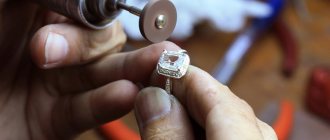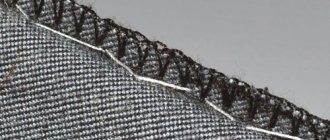Print page
Before you start playing the guitar, you need to tune it - tighten or loosen the strings so that they sound at the desired pitch.
Guitar tuning can be done by ear or using a special device - a tuner.
A tuner is a great solution to the problem: “How to tune a guitar for a beginner?”
Introductory information
Even before you start playing your first passages, chords and songs on the guitar, it is worth learning how to tune it. Then the guitar will sound smooth, all the harmonies will be in harmony with each other, the chords and scales will be exactly as they should be. There are several ways to tune the strings of a six-string guitar, and that's what this article is about. It is worth noting that almost all of the methods listed below are suitable both for those who want to set the instrument in standard tuning, and for those who like to build it in Drop or lower, but based on the quart sound.
Using a software tuner
The principle is the same as that of a hardware tuner - you pull a string, and the screen shows whether it is tuned correctly. To tune your guitar using your computer and phone, connect the guitar to a device or provide a microphone that receives the sound. Tuning with a software tuner (especially through a microphone) is less accurate, but you can find free options. You cannot use a software tuner at a concert or when going outdoors.
We looked at ways to tune a guitar that are used by beginner and advanced guitarists. Professionals tune the guitar using harmonics (guitar playing techniques) and check the tuning in additional ways. This type of tuning requires an ear for music and experience, and simpler options are also suitable for us. Now you understand how to tune a 6-string guitar, and you won’t be confused when you come home with a brand new instrument!
Basic Concepts
The pegs are where the strings are attached and where you turn them to tune them.
Harmones are overtones that can be produced by simply touching the strings at the fifth, seventh and twelfth frets. In order to play them, you just need to put your finger on the string in the area of the nut, without pressing it, and pull. A very high sound will be heard - this is a harmonic.
A tuner is a special program that reads its amplitude by air vibrations around a string and determines the note it produces.
What is tone and semitone
This is the distance from one note to another. The notes are connected into a scale that follows special rules. Between C and D there is one tone, but two semitones. This is because between “do” and “re” there is an alteration sign - “flat” or “sharp”. The rule applies to both upward and downward movements.
Up we “add” the note - that is, we put a sharp, and down we “decrease” - that is, we put a flat. Also, between “si” and “do” there is only a semitone, as well as between “mi” and “fa”.
On a guitar, a semitone is two adjacent frets of the same string. The arrangement of notes on the fretboard also follows the laws of music theory.
Standard guitar tuning
Standard tuning is called as such because this is how most classical guitar pieces are played. It's very easy to pluck most chords, so modern musicians mostly use it either as is or with its note distribution logic. It looks like we wrote above:
1 – designated as E 2 – designated as B 3 – designated as G 4 – designated as D 5 – designated as A 6 – designated as E
All of them are tuned to a fourth, and only the fourth and fifth form a diminished fifth between themselves - another interval. This is also due to the fact that some pieces are easier to perform this way. This is also important when tuning your guitar by ear.
Using the pedals
To quickly lower the tuning of a guitar, you can use guitar effects designed for this purpose, such as DIGITECH THE DROP.
The DIGITECH THE DROP Guitar Effect is a custom polyphonic drop pedal that can do two things: drop a guitar's tuning and act like a traditional octaver. Lowering the scale is possible either by several semitones (from one to seven) or by a whole octave. A separate mode lowers the tuning by an octave and adds the original sound of the guitar, creating an “octaver” effect. You can change your tuning without changing your guitar, which is very convenient during performances or rehearsals, but for studio recording it is still better to use manual downtuning of the guitar.
Do you want to add a new sound to your instrument, get a lower, “heavier” sound, or play spectacular riffs? Try lower guitar tunings and experiment in your creativity!
Ways to tune guitar strings
Fifth fret method
This is probably the most difficult way to tune a guitar, and the least reliable, especially if you don't have a very well-developed ear for music. The main task here is to correctly construct the first string , E. A tuning fork or a sound file with the correct sound can help with this. By ear, make the guitar sound in unison with the file, and proceed to further tuning.
1. So, pinch the second string at the fifth fret and simultaneously pluck it and the still open first. They should sound in unison - that is, give one note. Tighten the tuning pegs until you hear the sound you want - but be careful, as you may overdo it and end up having to re-string your guitar.
2. After this, on the fourth, pinch the third string, and it should sound the same as the open second. The same thing happens with tuning the third through the second - that is, clamp the fourth fret.
3. All other strings should sound the same at the fifth fret as the open string before the tuned one.
And the most interesting thing is that this principle remains the same even if you lower the entire scale by half a step, or even by one and a half steps. However, you shouldn’t rely entirely on your ears – but you can tune the instrument approximately without a tuner.
Tuning a guitar using a tuner
The simplest and one of the most reliable configuration methods. To do this, simply turn on the device and pull the string so that the microphone picks up the sound. It will show which note is currently being played. If it is lower than what you need, then twist the peg in the direction of tension; if it is higher, then loosen it.
Setup via phone
Both Android and iOS devices have dedicated guitar tuning apps that work just like a regular tuner. It is recommended that every guitarist download them, because in addition to directly working through a microphone, they contain tips on how to tune the instrument to other tunings.
Using guitar tuning software
In addition to portable devices, PCs also have a lot of different software for guitarists. They operate in different ways - some are like regular tuners via a microphone, others simply give the desired sound, and you have to tune it by ear. One way or another, they work the same way as mechanical tuners - you just need at least some kind of microphone to tune an acoustic guitar.
Tuning with harmonics
Another method of tuning an instrument by ear. It is also not very reliable, but it allows you to tune the guitar much faster than using the fifth fret method. It happens like this:
As mentioned above , the harmonic can be removed by touching the string with the pad of your finger directly above the fret, without pressing it. You should get a high-pitched, non-rattley sound that doesn't go away when you put your finger down. The trick is that certain overtones should sound in unison on two adjacent strings. One way or another, if the guitar is completely out of tune, then one of the strings will still have to be tuned using a tuning fork or by ear.
The principle is this:
- The base is the harmonic on the fifth fret. It should always be used.
- The harmonic on the fifth fret of the sixth string should sound in unison with the harmonic on the seventh fret of the fifth.
- The same applies to the fifth and fourth.
- The same applies to the fourth and third
- But the third and second question is a little different. In this case, on the third string, the harmonic should be removed on the fourth fret - it will be a little muffled, but the sound will still come out. For the second, the process does not change - the fifth fret.
- The second and first strings are tuned standardly according to the fifth-seventh ratio.
Tuning via online tuner
In addition to programs, a lot of online services for tuning a 6-string guitar are appearing on the Internet, freeing you from the need to download third-party software. Below is one of these online tuners with which you can easily tune your instrument.
How to tune a guitar by ear
Beginning players who do not know how to tune a guitar by ear can use the following method. It is necessary to tune 1 string by ear close to the note “E”, then adjust the rest to the first one.
Another method involves tuning a 6-string. Then the following steps are carried out to tune the string:
- 5 - the 6th is clamped on the 5th fret, the 6th and 5th strings are played in turn. If the instrument was tuned once, the sound should be almost the same. The peg, which is responsible for the tension for the 5th string, is scrolled until the 6th and 5th sound the same (in unison).
- 4 - the 5th is clamped on the 5th fret, and the 5th, 4th are played in turn. The peg, which is responsible for the tension of the 4th string, rotates until the 5th and 4th sound in unison.
- 3 - the 4th is clamped on the 5th fret, and the 4th and 3rd are played in order. The peg, which is responsible for tensioning the 3rd string, is scrolled until the 4th and 3rd sound the same.
- 2 - the 3rd is clamped on the 4th fret, and the 3rd and 2nd are played in order until they sound the same
- 1—press the 2nd on the 5th fret, and play the 2nd, 1st in order until it sounds unison.
Attention! To allow beginners to tune a 6-string guitar, the last string is tuned in unison with the 1st string. Then they descend in the reverse order (from top to bottom).
This method will sound slightly different from the standard tuning.
Guitar Tuning Tips
When setting up the instrument, you can follow these tips:
- To maintain the tuning of the instrument for a long time, the string is initially loosened and tightened to the required height, then raised further. Finally, they lower it back to the desired level.
- To avoid frequent stretching of the strings, after adjusting the tension, it is necessary to loosen and tighten several times. This allows the strings to finally lock into place. After this, tension loss rarely occurs.
- After purchasing an instrument with nylon strings, the tuning process is required several times in the first three to four days.
- You need to be careful when tuning a six-string guitar as it has a lot of tension.
- If the position is too low, the strings begin to ring as they touch the frets. If the position is too high, the sound of the instrument will be unclean, and performance on high frets will be difficult.
- If the string tension is weak, the sound can be flabby; if the strings are too tight, they may not hold up and burst.
You cannot use steel strings on a classical or concert model.
What to do if the guitar doesn't stay in tune?
In fact, there may be a lot of problems hidden in this issue. First of all, remove your strings and tighten the pegs with a screwdriver and a special wrench - it is quite possible that they have become loose and that is why the tension goes away quickly.
In addition, the problem may lie in the setup of the guitar neck - it may be too tight, under tightened, or even screwed up. In this case, it is best to contact a guitar specialist rather than repair the instrument yourself.
Music lessons
Do you want to learn how to tune an electric or acoustic guitar, learn how to play different songs, complex music, or just start doing something creative? Come to your first free lesson at our music school Future Music!
We are located at the Taganskaya metro station, a 4-minute walk. We are waiting for you every day from 10 am to 10 pm!
What other musical directions do we have:
- Violin;
- Piano;
- Saxophone;
- Ukulele;
- Flute;
- Vocals
We are constantly expanding the number and variety of musical directions in our music school. Call and find out if your instrument is also on our list!
Low tuning strings
If you plan to lower the tuning of your guitar by more than one tone, it is recommended to change the strings to thicker ones, which is due to the weakening of their tension. For tunings below B (B), baritones (longer scale guitars) are usually used.
In the case of lower tunings relative to strings, universal advice can be given: the strings should be thicker than with standard tunings. How much thicker and how not to overdo it? Let's figure it out.
String tension decreases with lower tuning, so thicker strings are needed to provide sufficient tension. If you look closely at a pack of strings, you can almost certainly find recommendations: for what tuning a given set of strings is optimal, you can deviate from these recommendations by a couple of tones.
In general, the choice of strings by diameter and tension is a strictly individual thing, but some general recommendations can be given.
The following factors influence the choice of strings.
- Guitar scale length - the longer the length, the greater the string tension, the thicker the strings you will need.
- String tension: the greater the tension of the strings, the thicker they are and give a more powerful and voluminous sound, but less saturated with overtones, which is due to the smaller amplitude of vibration of thick strings. Their sound is duller and flatter, which is especially noticeable on unwound strings.
- Third string: with sets of regular strings it comes without winding (plain), and in sets of thick strings (when the first string has a thickness of 12 or more) - with braid (wound). The braid increases the tension, so bending one and a half to two tones will become impossible, but the braided string sounds much fuller and richer at lower tunings.
To use drop tuning, unbalanced sets of strings (9-46, 10-52, 11-52, 12-56/60) are perfect, when the sixth string is lowered a tone relative to the first.
The thickest sets of strings (12-60, 13-72, etc.) are used for long-scale baritone guitars with a scale length of 26 inches or more. Such strings are usually used in very low tunings.
If you want to use thick strings for lower tuning instruments with a standard scale, then you may encounter three problems:
- there may simply not be enough options for adjusting the scale on the bridge, since a lower tuning requires its reconfiguration, in which case either the bridge is changed or a thinner set of strings is used;
- thick strings can bore out the string grooves on the nut if they can fit there, making it difficult to fine-tune when switching back to thin strings;
- thick strings may not fit into the peg, so it will have to be bored out.
It is also worth remembering that playing on thick strings will be quite problematic for people with small hands. Thicker strings will be ideal for riff-oriented music.
Related materials
Mikhail Shufutinsky third of September
In honor of September 3, we made a small cover of the song of the same name by Mikhail Shufutinsky. Look!
Shufutinsky September 3
How to play the Hm chord
How to play the Hm chord on the guitar. Four variations of B minor.
How to play the Hm chord on guitar
Guitar for Beginners Which guitar to choose for a beginner? This is the most common question that students ask us during the first lesson. Let's answer it! Which guitar to choose for beginners











